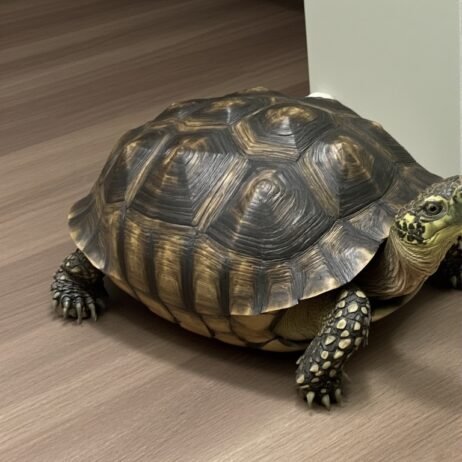How to Care for your Tortoise
- 4 February 2024
- BuyAPet Editorial Team
- Other Pets
How to Care for Your Tortoise
A tortoise is a wonderful pet—but they do have specific needs. Get the essentials for housing, temperature, lighting and diet so your shelled friend thrives for decades.
Quick Essentials Checklist
- Vivexotic Viva Tortoise Table — 90 × 45 × 21.5 cm
- Exo Terra Reptile Feeding Dish
- Habistat Hemp Substrate
- Exo Terra Dial Thermometer
- Exo Terra Glow Light & Mercury Vapour Solar Glo Lamp
- Exo Terra Heat Mat
| Setup Area | What Good Looks Like |
|---|---|
| Housing | Open-topped tortoise table (not a closed vivarium). |
| Temperature | Basking + shade zones so they can self-regulate. |
| Lighting | Quality heat + UV source (e.g., mercury vapour lamp). |
| Diet | Leafy greens, weeds, small live insect protein, little fruit, regular calcium. |
What essentials do I need?
Begin by collecting the equipment you’ll need for a safe, comfortable enclosure.
How do I house a tortoise?
The right home is essential—and many tortoises don’t thrive in a classic, closed vivarium. An open-topped Vivexotic Viva Tortoise Table is designed specifically for tortoises and includes a removable tray, play area and stand.
Why a table over a vivarium?
- Better airflow and humidity control.
- Space for basking lamps above the table.
- Easy to move outdoors on sunny days.
Safety touches
- Metal skirt to prevent climbing and flipping onto their back.
- Removable base tray—place directly on grass outdoors when supervised.
- Quick to assemble (keep instructions handy).
What conditions does a tortoise need?
Try to mimic your species’ natural environment. Provide a basking area and shade so your tortoise can move to regulate body temperature. Avoid overly moist enclosures which can encourage fungal growth.
Target temperatures
Use quality heating and lighting—Exo Terra are well-known for reliable products.
What will I need to feed my tortoise?
Bowls & presentation
Natural-effect feeding bowls are non-porous, easy to clean and blend into the surroundings—encouraging natural foraging behaviour.
Diet basics
- Leafy greens and safe weeds (e.g., dandelion) as the base.
- Protein from small live insects (mealworms, crickets) as needed for species.
- Fruit only a small percentage, occasionally.
- Calcium supplement twice per week to support healthy shell growth.
Once your enclosure is ready, you can look forward to a long and happy companionship with your tortoise.
FAQs
Do tortoises make good pets for beginners?
Yes—provided you’re ready for long-term care and can provide the right housing, heat, UV light and diet. Many live for 50–100+ years.
What’s the ideal temperature range?
A practical overall range is 21–32 °C with a basking zone at the warm end and access to cooler shade so your tortoise can self-regulate.
Can I use a closed reptile vivarium?
Closed vivariums often trap heat and humidity. An open-topped tortoise table generally provides better airflow and a safer gradient.
How often should I add calcium?
Dust food with a calcium supplement about twice per week unless your vet advises differently for your species.
Can my tortoise go outdoors?
Yes—on warm, safe days. The Vivexotic tray can be placed directly on grass; always supervise and provide shade and water.
